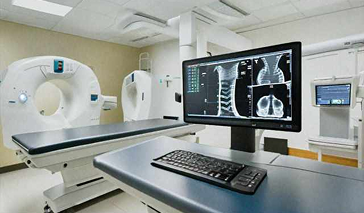Articles
All the latest articles from Emsow, delivered to you
-
 Read post
Read postFeature release 12/01/2021: Updated Invoice module
December 1, 2021
Dear practitioner! It is widely known that the most successful medical practices don’t reach their position in the industry without paying close attention to all aspects of their revenue cycle. In any case, it's crucial that your practice implements a system that speeds up the billing process whi... -
 Read post
Read post6 rules for buying a refurbished ultrasound unit
April 29, 2021
Buying a refurbished ultrasound machine? Check this out! In recent years, the medical imaging equipment market has become more democratic yet more sophisticated. More and more providers who want to start their own diagnostic business are looking to buy refurbished ultrasound machines. A used mac... -
 Read post
Read postHow to maximize revenue by using X-ray transportation codes?
December 1, 2020
Today, we're going to discuss x-ray transportation codes. Portable diagnostic equipment is gaining popularity. These machines are reliable and affordable and they help businesses cut office service expenditures besides. Moreover, mobile diagnostic services are often more convenient for patients t... -
 Read post
Read postSending X-ray images for reading through Teleradiology Solutions
October 21, 2020
Teleradiology is the transfer of medical images via information technologies. It has a long history (much older than the Internet). But before the 1990s it was not widely used because of the expense, inefficiency, and poor image quality. Today, the development of IT has reversed this trend. Now t... -
 Read post
Read postThe painless way of sharing ePHI with your patients
September 14, 2020
Today, a growing number of patients wish to have access to their health information. There are several reasons for that. They may need to change a doctor, learn a second opinion or just want to get control of their health records and feel independent of their providers. Whatever the reason, the R... -
 Read post
Read postStaying HIPAA compliant with Direct Messaging
July 6, 2020
Previously, we discussed tools for staying HIPAA compliant when sharing electronic Protected Health Information (ePHI). Now let’s focus on Direct Messaging, also known as Secure Direct Messaging or merely Direct, because, unlike SFTP or VPNs, it is intended for use by clinicians only. Direct is a... -
 Read post
Read postHIPAA compliance and PHI protection in imaging
June 1, 2020
HIPAA compliance is an existential issue for medical businesses, especially if they use special-purpose software and mobile applications (e.g. mobile imaging operators). HIPAA (Health Insurance Portability and Accountability Act), adopted in 1996, includes a set of legal requirements for protecti... -
 Read post
Read postDoes structured reporting limit doctors’ professional freedom?
April 28, 2020
Reporting, retrieving, and communicating clinical findings are among the most important capabilities of any diagnostic information system. The conservative way of preparing and storing clinical reports is to keep them as free text. Such reports (digital or paper) are not exactly “unstructured,” a... -
 Read post
Read postCOVID-2019: Coding Challenges and Practice Pitfalls
March 26, 2020
Discovered in December 2019 in Wuhan (Central China), a new сoronavirus infection named COVID-19 has rapidly spread to the rest of the world and become the first global pandemic of the 21st century. On January 30, 2020, the World Health Organization (WHO) declared the 2019 Novel сoronavirus (2019... -
 Read post
Read postMobile ultrasound revolution: welcome onboard
February 25, 2020
Today, rapidly developing healthcare technologies inspire more players to enter the market of diagnostic services. A lot of new solutions are now quite affordable – from wireless connections and secure PACS to compact mobile ultrasound machines. Some companies even create transducers that can be ...